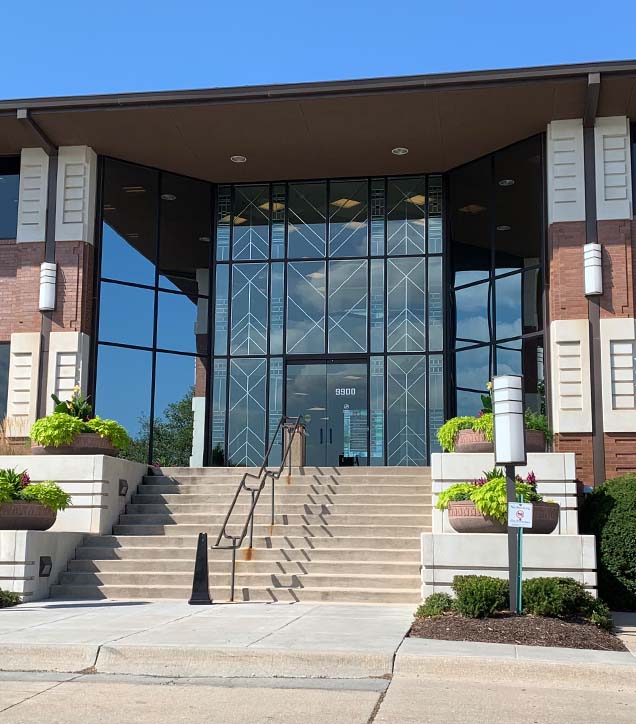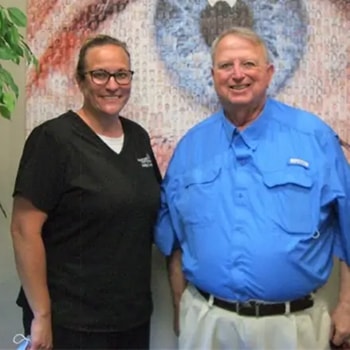Myopia Is a Global Vision Problem
Myopia (nearsightedness) is a common vision disorder. Today, nearly 30% of the U.S. population is myopic, but by 2050, more than 50% of the global population will have myopia. As myopia grows in prevalence, more eye care and health professionals are adopting techniques and tools to slow myopia progression.
Myopia management can protect vision and reduce the risk of eye health complications. Early diagnosis and treatment are crucial for life-long healthy vision. For myopia control in Omaha, contact the eye doctors at Heartland Eye Consultants to learn how your child may benefit.


What Is Myopia?
Myopia (nearsightedness) occurs when the cornea is too curved or the eyeball is too long. The shape changes how light enters the eye and how it is focused. With myopia, light is focused in front of the retina (located at the back of the eye) instead of directly on it.
Although the most common symptom of myopia is blurry distance vision, it can also cause eye strain and headaches when untreated.
The Risks of High Myopia
Myopia, like any vision disorder, can affect individuals uniquely. People may have low or high myopia. Myopia can be a progression, so a person diagnosed with low myopia as a child may develop high myopia later in life.
People with low myopia may experience few vision symptoms, but those with high myopia have an increased risk of vision problems. High myopia also increases the risk of eye conditions that can threaten sight, including:
- Cataracts
- Glaucoma
- Myopia macular degeneration
- Retinal detachment
Early diagnosis is crucial in eye disease management. If you or your child experience vision changes, give us a call and we can assess your eye health and discuss management options.

Myopia Management Methods
The traditional treatment for myopia (single-vision lenses) can help correct vision, but it doesn’t slow myopia progression. Although some myopia management methods also correct vision, the main focus is slowing the progression of myopia.
Ortho-k
Orthokeratology (ortho-k) is like a retainer for the eye. Instead of using braces or a plastic mould, ortho-k uses a rigid gas permeable (RGP) contact lens. The lenses are fitted for the patient’s unique eye shape. Patients wear the lenses at night and the lens gently shapes the eye surface (cornea). Then, the lens is removed for the day.
When ortho-k lenses are used consistently, patients can experience corrected vision even when not wearing the lenses. Patients typically noticed improved vision between a few days to a few weeks.
Low-Dose Atropine Eye Drops
Atropine eye drops have long been used for eye exams to dilate the pupil, allowing eye doctors to see inside the eye. Atropine is also a treatment option for amblyopia (lazy eye), strabismus (crossed eyes), and ocular inflammation.
Low-dose atropine eye drops relax the muscles responsible for focusing, which can effectively slow eye growth. The prescription eye drops are applied regularly over time. The dose and frequency will be based on the individual’s eye health and the eye doctor’s recommendation.
Multifocal Contact Lenses
Traditional multifocal lenses for eyeglasses or contact lenses incorporate multiple focusing powers to correct more than one vision problem. For example, a bifocal (a type of multifocal) may have a section to correct myopia and a section to correct presbyopia. The position of the eye (such as looking down or up) changes which area or focusing power is being used.
Multifocals for myopia don’t correct multiple types of vision problems but are designed with more than one section. Myopia multifocal contact lenses are designed to correct vision and to help slow eye growth.
Multifocal treatment for myopia is relatively new. The MiSight brand was the first to be FDA-approved in 2019. Myopia contact lenses are an option for children 7 years or older.
Slow Myopia Today
Preventing myopia progression can help protect life-long vision. Early myopia management offers children their best chance for healthy vision. We can answer your questions about myopia and recommend options for your eye care needs.
Vision Therapy

Vision therapy is an effective, non-surgical, doctor-supervised treatment that retrains the brain and eyes to work together more efficiently. Rather than compensate for vision problems, vision therapy aims to treat and correct the visual system itself.
Discover how we can help you or your child overcome vision problems such as strabismus and amblyopia, and build a greater sense of confidence. Take our vision therapy quiz today!



Our Location
We’re located just off Nicholas Street across from Westroads Mall. If you have trouble finding us, please give us a call at 402-493-6500.

Our Address
- 9900 Nicholas St, Suite #250
- Omaha, NE 68114
Contact Us
- Phone: 402-493-6500
- Fax: 402-493-4370
Hours of Operation
- Monday: 8:15 AM – 5:15 PM
- Tuesday: 9:00 AM – 5:15 PM
- Wednesday: 8:15 AM – 5:15 PM
- Thursday: 8:15 AM – 5:15 PM
- Friday: 8:15 AM – 5:15 PM
- Saturday: Closed
- Sunday: Closed
See Our Google Reviews




























